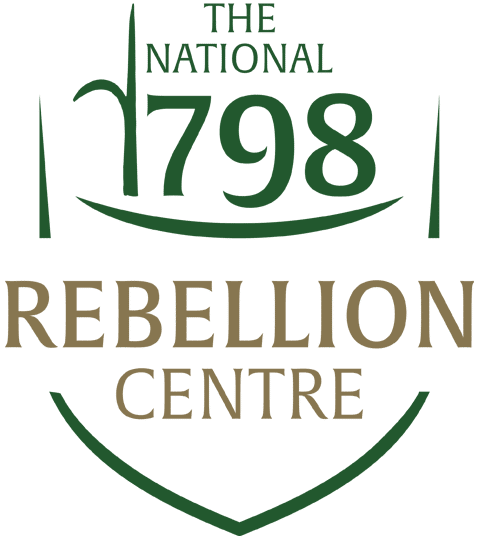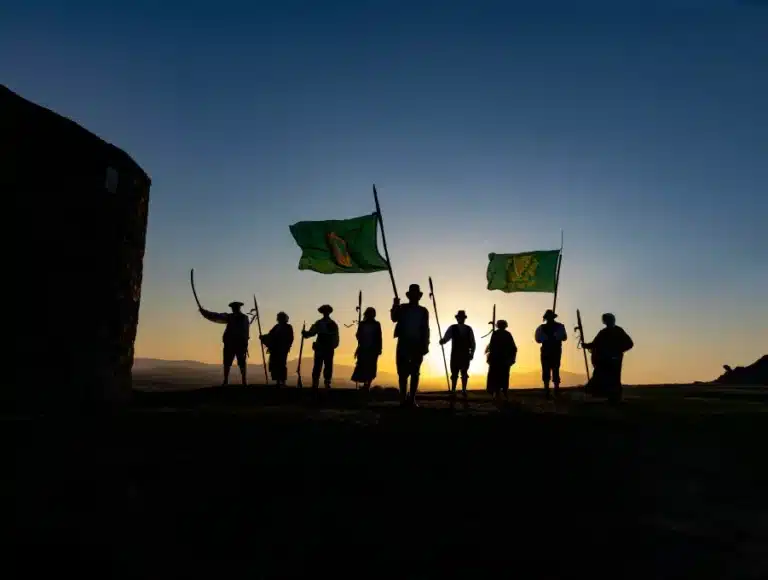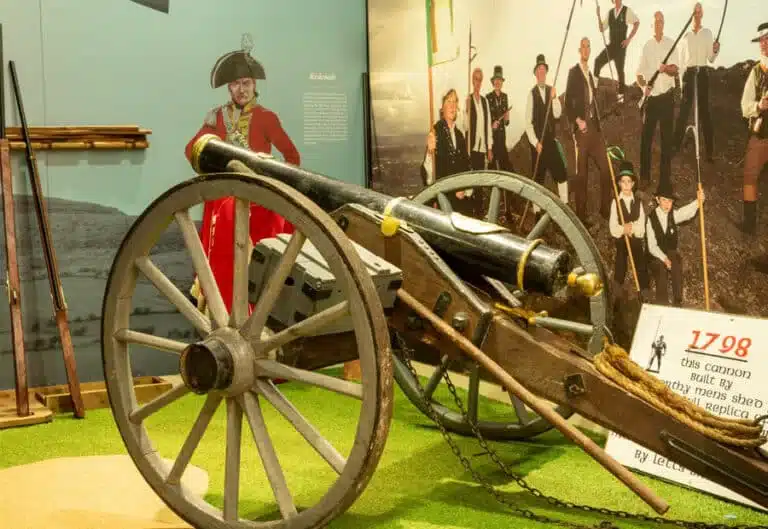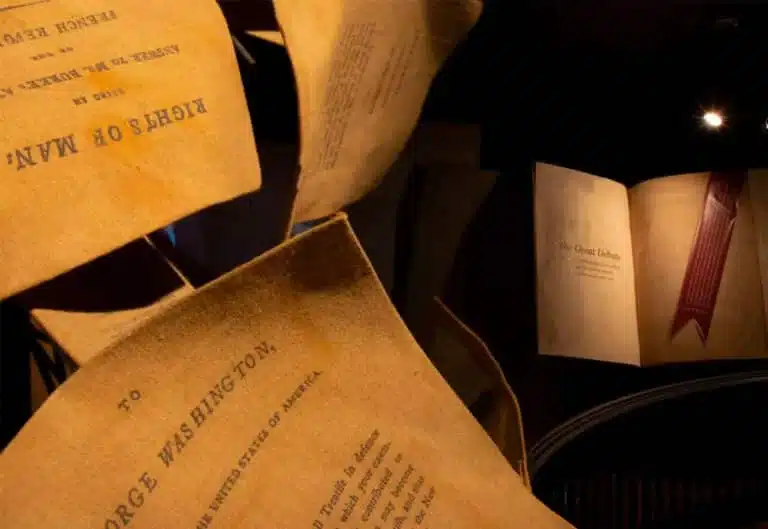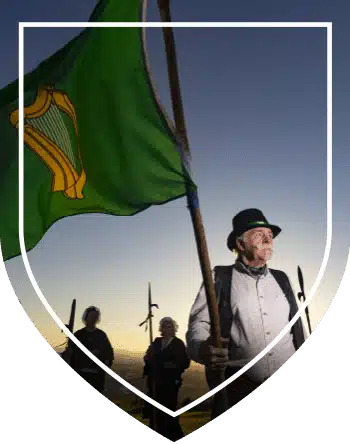


 Flags of 1798
Flags of 1798 
Both sides used flags to act as a rallying point for members of the Battalions and Regiments. Flags used in Battle were of a large size and would take great strength to keep them constantly raised. It was a mark of dishonour for a Regiment to lose its flag, and battles were often marked by furious struggles for their possession.

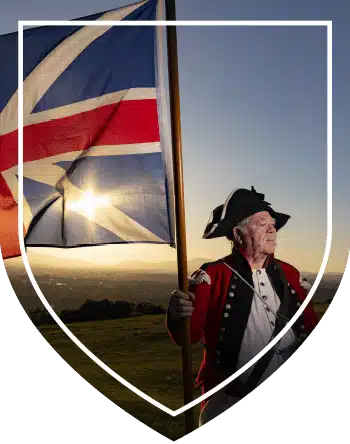
Crown Forces Flags
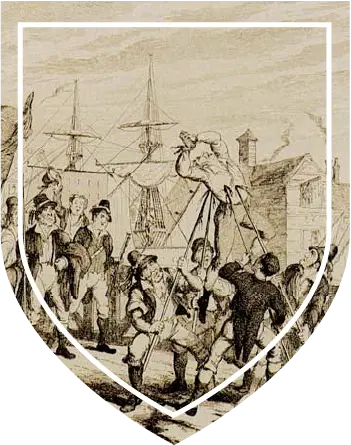
Rebel Flag: The MWS Banner

Rebel Flags

Crown Forces Flags

Rebel Flag: The MWS Banner
Depicted in illustrations of 1798, was a flag with the letters MWS in the centre. The meaning of the letters MWS is uncertain. Loyalists believed that they meant “Murder Without Sin” i.e., that rebels could murder Protestants with impunity, but as the 1798 Rebellion was largely non-sectarian, this meaning may have been attributed at a latter date. Other commentators have suggested that the real meaning is “Marksmen West Shelmalier” as this group was active in Wexford throughout the conflict. This illustration shows the Piking of crown forces soldiers by rebels on Wexford Bridge.
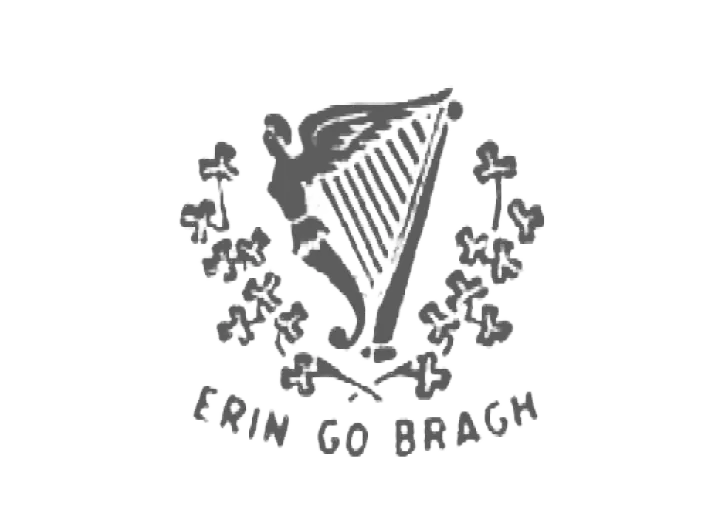
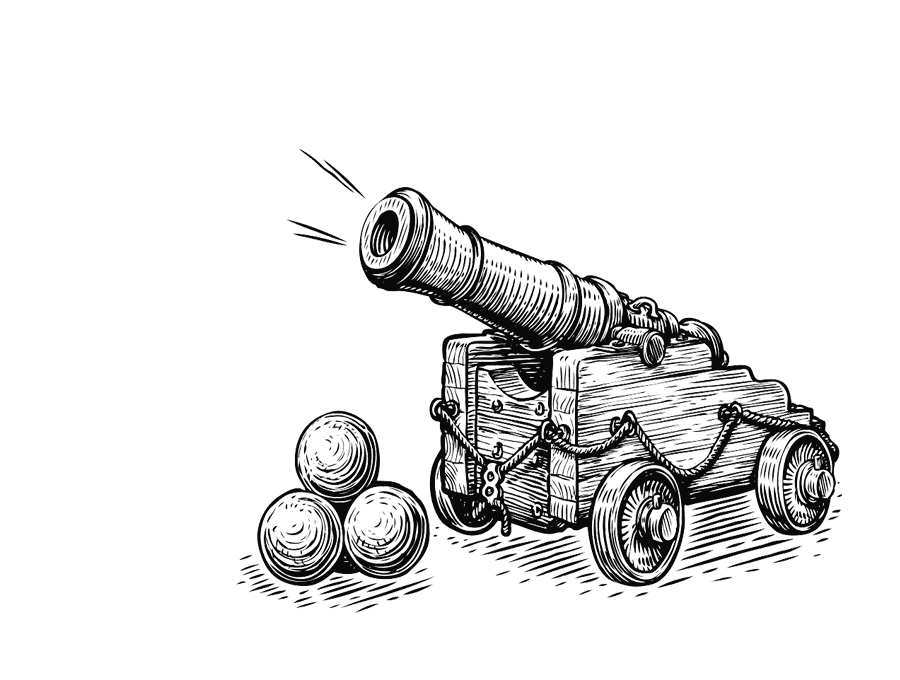
Experience
the Rebellion
Come face-to-face with the key figures of the Rebellion, immerse yourself in the bloody Battle of Vinegar Hill, discover the power of weapons from the period and learn, in gruesome detail, how some 20,000 insurgents faced the might of 10,000 well-trained and well-armed Crown Forces.
